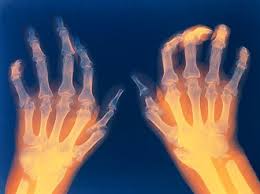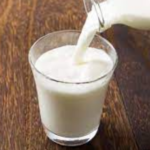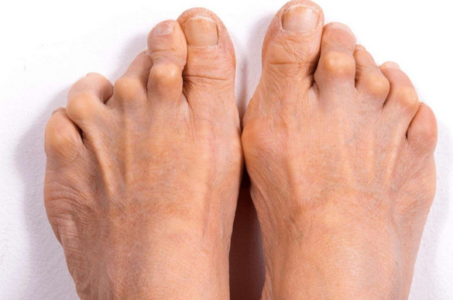What is rheumatoid arthritis?

Rheumatoid arthritis can be defined as an autoimmune disease that occurs when one’s immune system mistakenly attacks the joint’s synovium (lining of joint membranes) thus impairing the secretion of synovial fluid for joint lubrication. This often results in swelling, redness, inflammation, and joint stiffness.
Continued inflammation of the synovium causes it to thicken and compromise joint cartilages and ligaments resulting in joint deformation.
Though the condition often manifests as chronic inflammation of joints, damages can also be seen in other non-joint tissues such as lungs, eyes, hearts, and blood vessels.
What causes rheumatoid arthritis?
The chronic inflammation typical of this condition is the result of the immune system attacking one’s joint synovium. As to why this happens is still unclear. However, some research studies have hinted at the likelihood of some gene markers predisposing one to microbial infections that potentially trigger the condition.
Pro Tip!
i). In the early stages, the condition often affects only the smaller joints of fingers, wrist, and toes. However, later it progresses to other joints such as knees, hips, shoulders, etc.
ii). Arthritis joint pains often alternate between periods of severe pains (Flares) and intervals of relief (Remission).
Also Read: Benefits of Lavender Essential Oil
Rheumatoid Arthritis: Signs & Symptoms
- Fatigue
- Fever
- Loss of appetite
- Joint stiffness
- Joint inflammation, tenderness, and swelling.
- Deformed joints
It’s noteworthy that in later stages of the disease, other non-joint body tissues and organs may be involved. Some of the commonly affected tissues and organs include blood vessels, kidneys, heart, lungs, skin, nerves, etc.
Quick Read: Anti-Dandruff Hair Oils for Women & Men
Rheumatoid Arthritis: Risk Factors
A number of factors can potentiate your risk of developing rheumatoid arthritis. Some of these include:
- Patient’s Age
The condition can start at any age but typically begins in the 2nd, 3rd, or 4th decade of life.
- Sex of the patient
Rheumatoid arthritis is predominant among females than males. It therefore implies that women are more likely to end up with the disease later in life compared to men.
- Family history
Rheumatoid arthritis has been found to have some familial correlation. AS such, one is likely to end up with the condition if one or both parents have the disease in their blood line.
- Obesity
Persons who are overweight have a higher risk of developing, not just rheumatoid but also osteoarthritis. The risk is significantly higher for women in the 30 – 60 age bracket.
Also Read: How to Prevent Hair Loss Due to Alopecia
Complications associated with Rheumatoid Arthritis
Like most chronic ailments, this disease often predisposes one to other conditions. Some of the most common ones include:
An abnormal distribution of body fats.
- Immunesuppression:
Some of the medications used in the management of rheumatoid arthritis anti-arthritis have been found to cause the impairment of one’s immune system functions, a conditions referred to as immune-suppression.
- Rheumatoid nodules:
Can form anywhere in the body, but often appear at pressure points.
May occur due to continued inflammation and swelling of the wrist synovium causing the compression of nerves that serve the palm and fingers.
- Cardiovascular conditions:
In the advanced stage, rheumatoid arthritis can harden blood vessels that serve the heart. Moreover, the disease can also lead to inflammation of the myocardium. All these associated complications can lead to serious heart complications.
- Lymphomas:
Rheumatoid arthritis has been associated with cancers of the lymphatic system.
- Respiratory complications:
Inflammation of the lung tissue, following arthritis, can lead to lung disease.
Rheumatoid arthritis increases the risk of developing Sjogren’s syndrome characterized by the dryness of the mouth and eyes.
Also Read: Best Makeup Tips and Tricks for Teenage Girls
Diagnosis
The diagnosis of rheumatoid arthritis involves physical examinations and laboratory tests.
i). Physical examination
The doctor checks for signs of joint inflammation, redness, swelling, warmth, and deformation. Furthermore, he or she may test for joint flexibility, muscle strength, and reflexes.
ii). Lab tests
Blood tests for rheumatoid arthritis:
- Erythrocyte Sedimentation Rate (ESR): Elevated in arthritis due to the associated inflammatory process.
- C-Reactive Protein: Elevated in arthritis due to the associated inflammatory process.
- Anti Cyclic Citrulline Peptide antibodies test
Imaging tests
A number of imaging techniques can be used to diagnose rheumatoid arthritis. Some of the most common ones include:
- X-ray scans
- MRI scans
- CT scans
Quick Read: Pregnancy and Contraceptives
Rheumatoid Arthritis: Treatment
The modes of treatment for rheumatoid can be broadly categorized into:
i). Pharmacological Interventions
Involves the use of medications to manage associated symptoms. This is the most common and recommended method for managing the disease. It involves the use of medications and medical procedures to manage the disease.
ii). Non-pharmacological Interventions
Apart from the pharmacological methods of managing arthritis, the disease can also be managed using other means to quell the pain and associated symptoms. These are broadly referred to as non-pharmacological interventions.
A). Pharmacological Interventions
Studies have shown that steady remission of joint pain and other symptoms associated with rheumatoid arthritis occur if treatment is commenced early in time. The choice of meds to use is dependent on the severity of the patient’s symptoms. Here are some classes of drugs used in the management of rheumatoid arthritis:
i). Corticosteroids
These drugs are often prescribed to relieve acute pain and inflammation associated with arthritis. However, the dose should be tapered to limit adverse effects such as diabetes, weight gain, osteoporosis, etc. Common corticosteroids used in rheumatoid arthritis include:
Quick Read: Best weight loss tips
- Prednisone (Deltasone, Sterapred)
- Hydrocortisone (Cortef, A-Hydrocort)
- Prednisolone, methylprednisolone, triamcinolone
- Dexamethasone
ii). Nonsteroidal Anti-Inflammatory Drugs (NSAIDs)
This category of drugs relieves both pain and inflammation and is available both as prescription-only and over-the-counter meds. Common NSAIDs used in arthritis include:
- Ibuprofen (Advil, Motrin)
- Aspirin (Bufferin, Bayer)
- Diclofenac (Cataflam, Voltaren)
- Diflunisal (Dolobid)
- Etodolac
- Fenoprofen
iii) Disease-Modifying Antirheumatic Drugs (DMARDs)
These drugs slow the progression of the disease. Besides, they also stimulate the repair of damaged tissues within the joint. Common DMARDs in use include:
Quick Read: Pregnancy and Contraception
- Hydroxychloroquine (Plaquenil)
- Leflunomide (Arava)
- Methotrexate (Trexall)
- Minocycline (Minocin)
- Sulfasalazine (Azulfidine)
iv). Biological Response Modifiers (BRMs)
This is a new class of drugs that’s shown significant efficacy in the management of rheumatoid arthritis. Common drugs in this class include:
- Abatacept (Orencia)
- Adalimumab (Humira)
- Anakinra (Kineret)
- Etanercept (Enbrel)
- Golimumab (Simponi)
- Sarilumab (Kevzara)
Complementary Interventions
Used alongside pharmacotherapy in order to improve treatment outcomes.
i). Surgery
In cases of advanced rheumatoid arthritis, damage to the joint and surrounding tissues may not be possible with pharmacological interventions alone. Surgery may be necessary to correct joint deformities and restore function. Here are some types of surgeries that may be conducted on arthritic joints.
- Tendon and ligament repair
Rheumatoid arthritis, in the late-stage, may damage joint tendons and ligaments. This type of surgery can be used to correct such damages.
- Synovectomy
In severe rheumatoid arthritis whereby the lining of the joint is inflamed and swollen, an operation can be conducted to remove the synovium. Synovectomy is often conducted on joints of the hips, fingers, elbow, knees, and wrist.
Quick Read: Best anti-aging supplements
- Joint fusion
Joint fusion is a surgical procedure that’s often conducted on severely damaged arthritic joints. The goal is to realign the bones and relieve pain. Note, however, that this procedure can impair flexibility and mobility of the joint.
- Joint replacement
Severe rheumatoid arthritis can cause irreparable damage to the joint. In such a case, the entire joint is removed and replaced with a prosthesis.
B). Non-Pharmacological Interventions
Apart from the pharmacological therapies, arthritis can also be managed without drugs. Here are some common non-pharmacological interventions with proven health benefits.
i). Exercise
The need to exercise frequently can’t be emphasized enough in the management of many health conditions, including rheumatoid arthritis. Besides improving blood supply and nourishment to the joint muscles, exercise also enhanced joint flexibility and strength. Examples of recommended exercises for arthritic joints include bicycling, swimming, light jogging, walking, etc.
ii). Heating pads or Ice
For instant relief from severe joint pain, consider using ice cubes. For morning joint stiffness, you can simply dab the joint with some heating pads.
iii) Massage
Another great way to relax and deal with the pain of rheumatoid arthritis is to have some soothing massage.
iv). Use of alternative medicines
There are a number of alternative medicines that have shown promise for arthritis. The most common ones include:
- Fish oil
- Plant oils
It is advisable to seek immediate medical attention whenever you experience joint pain for an extended period of time. If management begins early, you are far more likely to avert damage to your joint if you end up being diagnosed with rheumatoid arthritis.
























